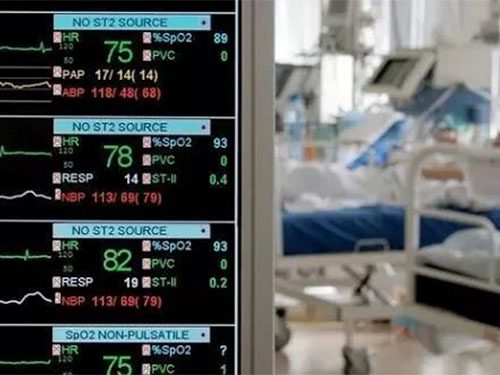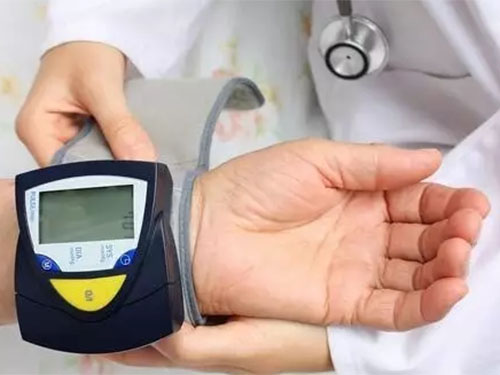Miniaturized MEMS/IO Power Supply Connector Technology
As global healthcare costs soar and the population ages, the demand for portable medical diagnostic equipment and treatments is growing rapidly in patients' homes and in underserved and remote areas. According to a recent industry report (Home Healthcare Market Current Trends, Opportunities & Global Forecasts to 2016), new devices and markets are booming to meet patients’ home healthcare needs, including respiratory therapy, home infusion therapy, rehabilitation services and monitoring for chronic medical patients. In addition to predicting an average annual growth rate of 7.7% for the home healthcare market through 2016, the report also states:
The most important healthcare development trend observed recently is the shift from hospital to home for treatment to gain cost advantages and reduce hospital expenditures. In addition, the shift from treatment to active monitoring has also created new opportunities for the home healthcare market. Patients prefer to receive healthcare at home rather than in hospital due to convenience and high cost-effectiveness.
Patient monitors are gradually moving from hospital bedside equipment to home healthcare or connected systems. Micro interconnect I/O solutions and innovation capabilities are in line with the trend of telehealth applications requiring smaller, lighter and integrated solutions.
As healthcare providers and patients drive these shifts, leading electronics innovators are addressing the technical challenges of transitioning devices and instruments that have traditionally been used in doctor's offices, clinics, and hospital settings into patients’ homes. Among these challenges, power management plays a major role in patient ease of use, size, performance, and durability for such medical devices. Therefore, it is important for engineers making system-level tradeoffs to make power management decisions early in the design cycle.
The power connector industry is gradually introducing new extremely small low-profile high connectors, innovating in the smartphone industry to meet the growing demand for improved portability and miniaturization of medical instruments and equipment. Micro-Electrical Mechanical System (MEMS) is an innovative approach that combines electrical and mechanical components to provide systems with unprecedented tiny sizes, and this approach has become an important technology of choice for small and portable designs in the booming healthcare market.

MEMS technology can be used in biomedical applications such as surgical tools, drug delivery and biosensors, as well as diagnostics and other in vitro applications.
Power Connectors
In existing designs, MEMS connectors are compatible replacements for other larger connectors, and MEMS technology provides ultra-low profile solutions and high performance in power connections. MEMS micro-interconnect methods have a successful application and customer performance record in the real world, providing powerful and feasible tools for design engineers who need smaller micro-products that meet the needs of healthcare.
Advantages of MEMS in Medical Applications
MEMSI/O connectors are suitable for any market that requires product or system miniaturization, including consumer products, mobile and medical applications. This technology has made outstanding contributions in the medical field to improve patient care and safety, especially in the field of minimally invasive surgery, patients who require frequent blood and urine testing and monitoring, and those who receive medications through sensor patches.

There are many advantages to using MEMSI/O technology in medical instruments and equipment. It provides a reliable and flexible socket interface. MEMSI/O is more rugged than many traditional connectors. MEMSI/O technology has zero height, making it ideal for applications that use electronic control to accurately administer drugs at set intervals. Low-power MEMSI/O means better reading consistency and fewer battery replacements in portable monitoring or other devices. In invasive treatment steps, MEMSI/O can achieve a smaller instrument footprint, thereby reducing the pain experienced by patients.
MEMSI/O connectors are recognized for their unique innovations in medical battery connectors, camera modules, and sheet connector I/O applications, such as connector products for sensors with small form factor, high-density ultrasonic connectors. Ultrasonic technology is an area with great patient demand and is the focus of major healthcare equipment manufacturers. Due to size and other limitations, existing ultrasound machines are impractical for use in many parts of the world. Developing and emerging countries can benefit from the emergence of more MEMS-based micro products to enable smaller portable ultrasound equipment for use in remote areas.
Power Connectors
The medical sensor market offers great application potential for MEMS, including newer sensors, chemical sensors, flow sensors, and position sensors. Today, approximately 70% of chemical sensors in the U.S. market are used in healthcare. As obesity continues to increase and the incidence of diabetes continues to rise, low-profile high-profile MEMS powered connectors are ideal for the mobile portable blood glucose monitoring market.
In home and institutional healthcare, any instrument or device problem could put patients at risk. MEMSI/O technology provides a stable socket-style "pull and lock" connection suitable for handheld patient blood glucose and other disposable monitoring products.
MEMSI/O connectors have been proven to be particularly suitable for connectors that require small size and high density, such as medical battery connectors and camera modules.
Portable blood glucose monitoring instruments use standard micro I/O to connect two circuit boards, with a side height of about 0.7mm. Using MEMS technology, the same connector side height can be reduced to just 0.15mm. The MEMS connection is an unprecedentedly tiny layer that appears almost flat, unlike the thickness of a diabetes test strip. MEMS connectors, often referred to as "zero height" connectors, provide a miniature power pack solution that meets healthcare needs and puts reliable monitoring tools in the hands of patients.
For high-impedance limited cable solutions, MEMS I/O technology helps mitigate risk and can be shared with high-speed copper cables or any flexible substrate. Some medical product manufacturers use copper cables with tiny connections for actual monitoring. If the manufacturer is not using MEMS, ACF bonding is often used to solder jumpers directly to the copper cable. Originally used in mobile phones, but adapted for medical devices, miniature camera modules are often soldered directly—and permanently mounted—on jumpers on the flexible cable PCB. With this design concept, the copper cable can become an expensive jumper if the camera module is damaged or needs repair, so the more common "approach" is to disconnect and replace the entire flexible cable.
However, MEMSI/O technology allows the micro-camera to be plugged directly onto a flexible cable without creating a high profile, and can be easily disconnected and repaired without replacing the entire cable. By sharing with a video-enabled camera or microIDT, MEMSI/O can connect an HD video display to the main circuit board for high-speed video streaming for endoscopy and other invasive medical procedures. Traditional endoscopes are used to diagnose gastrointestinal colorectal cancer and other foreign bodies, requiring the patient to be sedated and only a portion of the small intestine can be viewed. MEMS-enabled endoscopes can fully examine the small intestine without the need for sedation, digital images, a transmitter, and even a light source.
MEMS Manufacturing Advantages
The MEMS device manufacturing process is a natural evolution of the same process used for semiconductor manufacturing, requiring the deposition of material layers using photolithography and etching steps to produce the required circuits and components, such as power connectors. Standard power connectors designed for medical devices are typically composed of molded plastic with pressed-formed terminals and contacts, resulting in a relatively large overall footprint.
In contrast, MEMS technology basically includes masking, grabbing, plating, printing and lamination, and finally obtains an extremely low-side high contact layer. MEMS I/O systems usually etch and drill on extremely thin metal layers to create sandwich-like insulated electrical connections. The metal layer can be as thin as 150 μm (0.15 mm). The advantage of MEMS is that manufacturers can produce significantly smaller low-power connectors, providing higher performance than larger competitive components. In addition, the MEMS manufacturing process shortens the time to market and reduces the cost of traditional connector manufacturing injection molds and stamping terminals.
MEMSI/O technology uses a small-sized sheet connector to integrate the high-density and high-speed functions and cable connections of high-speed connectors in a micro-miniature product, thereby eliminating EMI interference. MEMSI/O connectors have the same rated number of mating cycles as standard micro-miniature connectors, typically 15-30 mating-unde-mating cycles, but some models can reach thousands of mating cycles. Rigorous testing shows that the MEMSI/O mating interface can withstand drops and vibrations up to 6000G with negligible effects.
By cutting out most of the traditional connector housing without sacrificing performance or density, MEMS I/O technology represents an important paradigm change for medical instrument designers and manufacturers. MEMS technology not only reduces the size and expensive PCB space, but also, by using a simple socket-type mating interface to replace the permanently soldered PCB connection, MEMS technology enables a level of design flexibility that is only available in larger connector and product designs. Not surprisingly, the use of MEMS-enabled systems in medical devices and instruments has grown exponentially, and its rapid growth trend will likely continue.
(ps: The article is transferred from the MEMS WeChat official account. If there is any infringement, please contact the website administrator to delete it)
